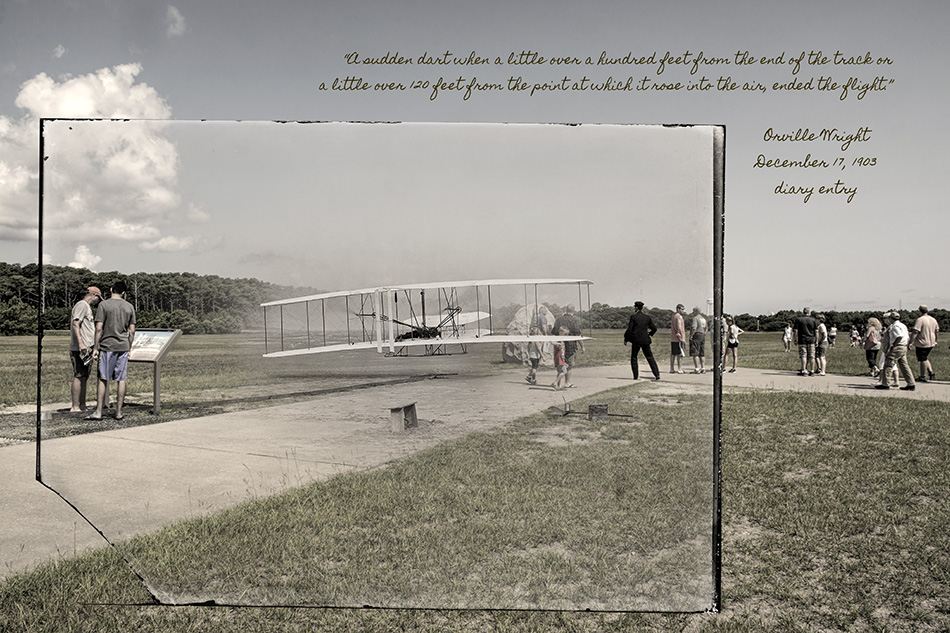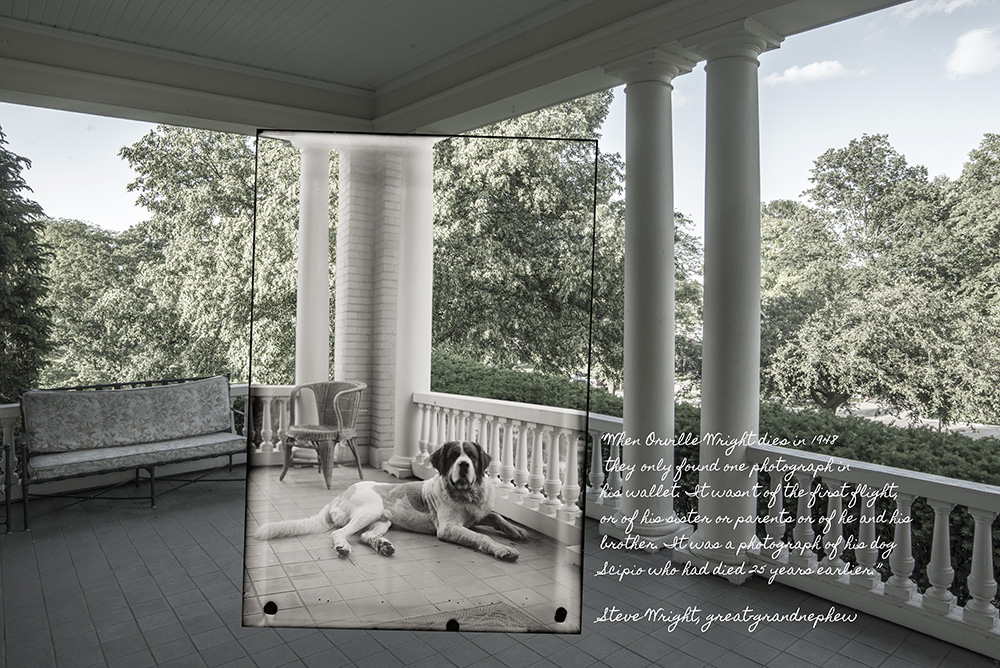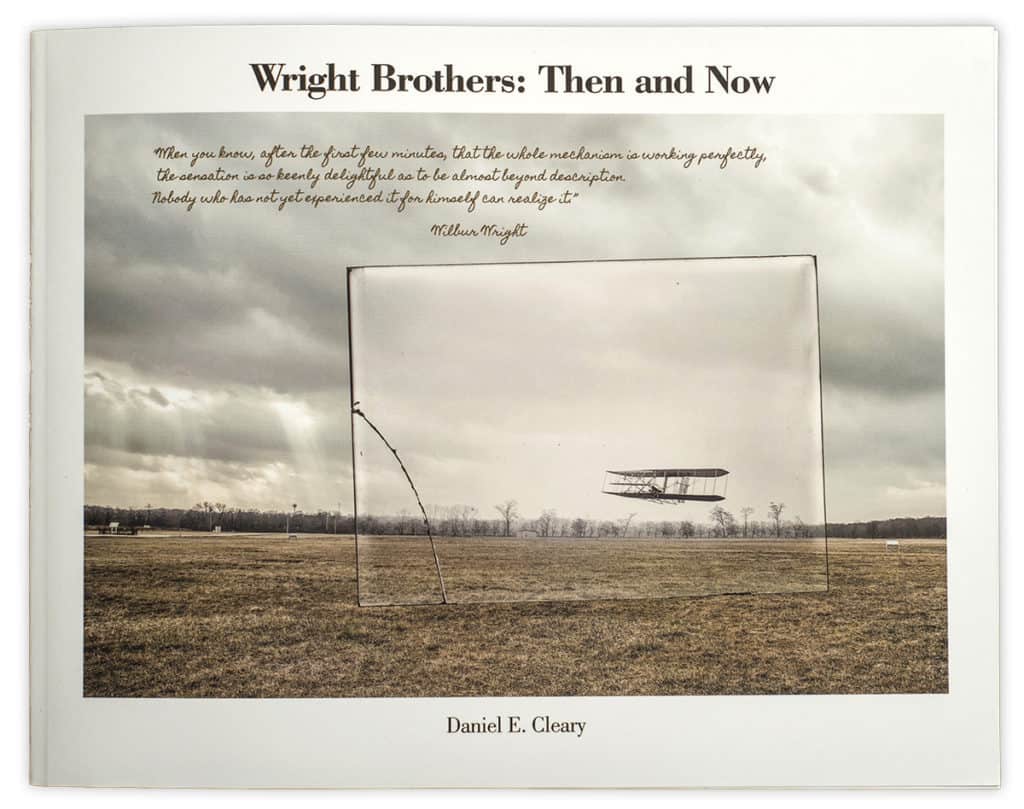December 17, 2023, will be the 120th anniversary of the Wright Brothers’ first flight in Kitty Hawk, North Carolina. In his diary that day, Orville wrote, “I got on the machine at 10:35 for the first trial. The wind, according to our anemometers at this time, was blowing a little over 20 miles. The machine lifted from the track just as it was entering the fourth rail. A sudden dart when a little over a hundred feet from the end of the track or a little over 120 feet from the point at which it rose into the air ended the flight.” John T. Daniels took the famous photograph of the first flight. Daniels was a member of the U.S. Life-Saving Station in Kill Devil Hills, North Carolina, and knew little about photography. His job was to squeeze a rubber bulb, forcing air through a tube that pushed the camera lens’s shutter release. Daniels didn’t remember squeezing the bulb. I am very familiar with this type of shutter release system, and I can imagine that when he saw the plane take off, he instinctively tightened his hand around the bulb in excitement. The Wrights knew that the shutter had been released but didn’t know if they had a photograph until months later when they processed the film in their home darkroom.
I’ve had two other photographs from the series and a hardcover copy of the book go out this week as Christmas presents, 7 Hawthorn Street and Scipio, a fan favorite.
I used a famous Wilbur Wright quote in the 7 Hawthorn Street photograph, “If I were to give a young man advice as to how he might succeed in life, I would say to him, pick out a good Father and Mother and begin life in Ohio.” Orville Wright made the historic photograph in 1897 of Daniel Henderson on the sidewalk in front of the Wright house at 7 Hawthorn Street. Orville was interested in photography, and the Wrights even sold camera equipment in their bike shop. When I saw this image in my mind, I immediately thought of Orville taking his camera out on a beautiful day to ensure the camera was in good working order. Along comes Daniel Henderson, and after seeing the camera on a tripod, he asks Orville, “Hey, Mr. Wright, what yah doin’?” This imagined encounter was the source of my inspiration for this image. It made me look at the Wright brothers as photographers instead of two men using photography to document their trials. All I had to do to create my image was photograph their house on 7 Hawthorn Street, but where is the house? Henry Ford acquired the Wright Brothers’ home and cycle shop and relocated the buildings from Dayton, Ohio, to his Dearborn, Michigan, museum complex in 1937. What now remains at 7 Hawthorn Street in Dayton is a replica of the front porch and house façade, which was enough to create my photograph.
The last photograph in my series is titled “Scipio.” On March 10, 1917, a new resident moved into Hawthorn Hill. It was a sixteen-pound St. Bernard puppy that Orville had purchased from Nina Dodd’s White Star Kennel in Long Branch, New Jersey, for $75. Orville built a pen, and soon, he became a family member. Katharine named him “Scipio” after the famous Roman general who had defeated Hannibal and thwarted Rome’s invasion. Orville loved his dog and took many photographs of him. Scipio died in 1924 after only seven years. Looking through Orville Wright’s archives, you’ll find many pictures of his dog. What I liked about this historic photograph is the expression on Scipio’s face. It’s the face of a dog who also loves his owner, the photographer. I can tell that the photograph was processed by hand in a home darkroom. There are three air bubbles at the bottom of the frame. Also, the edges of the image are uneven. I call these “beauty marks” from a photographer’s point of view. These beauty marks tell me that Orville himself probably processed the film. I previsualize this photo from the beginning. I liked this historic vertical photograph, so when I was on the porch at Hawthorn Hill, I created many pictures, knowing one would work. I liked how the history and my photographs worked together. The problem was I didn’t have a quote that worked perfectly. It took me several months of research to find the quote I used in this photograph. Dayton History at Carillon Park gives tours of the Wrights’ house, Hawthorn Hill, in Oakwood, Ohio. One of the stories they tell is about the photograph of Scipio found in Orville’s wallet when he passed away. “When Orville Wright dies in 1948, they only found one photograph in his wallet. It wasn’t of the first flight, or of his sister or parents, or of he and his brother. It was a photograph of his dog Scipio, who had died 25 years earlier.”
I mailed a hardcover copy of my book to a guy outside of Columbus. He is giving it to his Dad for Christmas. His Dad has been a recreational pilot for about 20 years and is a lifelong aviation buff. He loves the history and science behind flight. He is flying an experimentally built piper cub, and he thought my book would be a perfect gift.
If you know of a Dayton or Aviation history fan for whom you still need a holiday present, maybe a print from my Wright Brothers: Then and Now series or the book would make a perfect gift. There still is time for me to ship them out. Go to https://clearyfineartphoto.com/. You will find all my photographs from the Wright Brothers: Then and Now series, along with my book.




